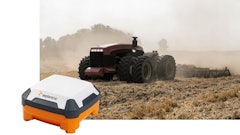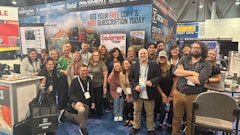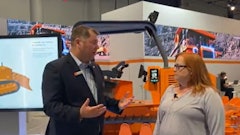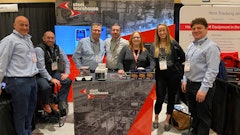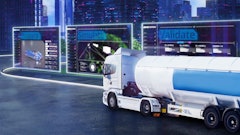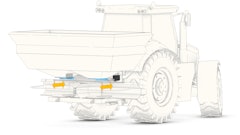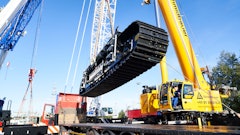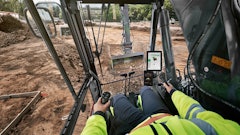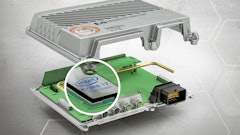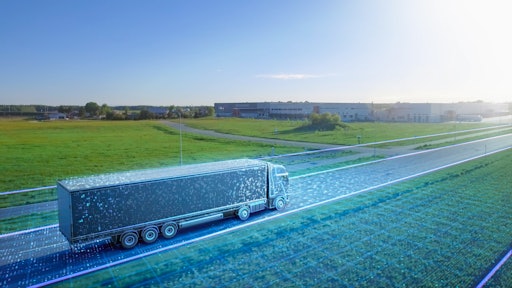
The last 12 to 18 months have been challenging for the autonomous industry. Disturbing news seemed to chase each other as Waymo seemed to go back on their commitment to drive L4 truck autonomous uses cases, TuSimple focused on its China business and is in the process of delisting from Nasdaq, Cruze is facing cash flow challenges and companies such as Argo.AI and Embark are no more. An overall volatile environment and high interest rates made funding rounds challenging for startups as well as OEM-affiliated entities. Valuations of listed companies tanked.
Given this upheaval, some industry observers may be tempted to think that the future of autonomy is shaky or that, at the very least, we are solidly in the trough of disillusionment of the high-tech hype cycle. Yet, this would not adequately reflect realities on the ground.
In the agricultural space, autonomous tractors are providing tillage on demand in real-life applications. Farmers can book autonomous services on a per-hectare basis, while watching the equipment work on their iPhone as they have dinner at home. Countless autonomous robots are providing crucial pre-harvest and harvest assist activities in specialty crop applications. Farmers bank on these robots to address critical labor shortages in the industry and are increasing investments in these new technologies on a year-over-year basis. With autonomous tractors being feasible, the race is on to automate the work functions of implements such that labor intensity and agricultural efficiency can be further improved.
Mining is another area in which autonomous trucks are evermore present. Leading mining truck companies such as Caterpillar and Komatsu have hundreds of mining trucks in operation across dozens of sites. Safety and total cost of ownership are major drivers for adoption. Not having to deploy human drivers in barren and remote mining environments is a plus, as are the reduced maintenance costs that result from operating trucks within design parameters. Staying within design parameters is by design in autonomous trucks, yet not necessarily the case with human drivers. These benefits overcompensate investments in better-maintained roads, support crews that need to intervene should an autonomous truck get stuck, etc. The case for autonomy is so compelling that companies are actively mapping and investing in other use cases for automation such as semi-autonomous loading.
On-road applications with restricted operational design domains (ODDs) are successful as well and improve modern lives, particularly in rural areas. At a recent panel at CES 2024, one of the speakers discussed the positive impact that shared taxi operations and last-mile distribution solutions can have on the livelihoods of rural populations, as well as underserved populations in urban environments. Together with Laura Chace (CEO, Intelligent Transportation Society of America), Edwin Olson (CEO, May Mobility) and Richard Steiner (vice president of Government Relations and Public Affairs, Gatik) the panel clearly demonstrated that autonomy is crucial to not only address labor shortage, but also to enable access to vital resources such as employment opportunities, schools, government offices, etc., for weaker sections of society.
It enables a larger section of society to lead productive lives and does so in a safer manner than what we experience with human drivers. Plus, even in on-road applications, clearly identifiable use cases exist in which deploying autonomous solutions are commercially attractive.
On-road, L4 long-distance trucking is hence one of the applications that has not quite been solved yet. However, after being delayed several times, the timeline of autonomous trucks is now becoming clearer. Autonomous trucks have gone through a classical hype cycle. After some bullish announcements early on and inflated expectations regarding the timing, players have changed their view on what is feasible in the mid-term. Slower-than-expected technology progress and safety issues have further pushed back these timelines. Now, the fog is clearing and the roadmap, at least for the coming years, feels more stable.
With players working on safety cases, “driver out” autonomous-driving technology is the next milestone within reach. Autonomous truck players have come a long way in training their systems on increasingly complex driving scenarios. Just five years back, autonomous drivers were capable of performing only simple capabilities, such as maintaining lane position and performing lane changes; systems have since been developed to handle unexpected cut-ins, merges, night driving, further levels of inclement weather, and even construction sites. Many autonomous truck players are close to having implemented the full set of capabilities that the autonomous driver requires or are currently solving the last remaining challenges, such as pulling over to the road shoulder or inspections.
The focus of most players is now shifting from expanding the capability set and the ODD of the vehicle to validating and improving their systems. Players have used 2023 to prove the safety capabilities of their technology. Safety incidences, like those seen in 2022, may impact this overall delivery timeline, but if things run smoothly, driver-out operations can be expected in 2024.
While the ability to handle edge cases is critical for driver-out operation, having a safe action as fallback, where the vehicle comes to a controlled stop in a safe location, is equally critical. In the early phase of adoption, we will see autonomous trucks sitting in a safe mode on the road shoulder while a remote operator on an on-ground support team takes over. While this will be feasible as long as the numbers of autonomous trucks in operation are small, the support needed, and thus the operating cost, must come down eventually. Including the cost of human support, driver out autonomous trucks will not immediately be cost competitive to conventional trucks. This proves that the driver out milestone is important, but theoretical. It determines the starting point of the market adoption curve, but the speed of adoption will be determined by both technological advancements and consumer behavior.
While driver-out is an important technology milestone, large-scale commercial adoption is still far from realization. Parallel to technology development, autonomous truck players are working on commercializing their autonomous drivers. To accelerate market adoption, several players have chosen a business model in which they act as autonomous truck carriers hauling freight for customers with their own fleet of autonomous trucks. The number of loads handled is still very low today but will grow as more customers sign on and routes are expanded. In the mid-term, autonomous truck players will additionally make their technology available to traditional truck carriers, likely through a pay-per-use subscription model.
Once the technology is commercially available, a large market potential can be tapped. From a total addressable market perspective, about 40% of all on-road freight traffic could be handled by autonomous trucks.
This is the share of freight traffic that, today, is handled by combination trucks and travels a distance of at least 200 miles. Shorter routes will, at least initially, not be economical while trucks still operate in a transfer hub model with costly first- and last-mile drays.
Savings from autonomous trucking will be significant, but market adoption will still not happen overnight. Several near- and mid-term constraints will determine the speed of market adoption. While driver-out operation is possible from a regulatory perspective in the vast majority of U.S. states, including Texas, where freight volumes are concentrated, some states, especially California, specifically prohibit autonomous trucking, limiting short-term adoption potential. Also, as OEMs and technology players do not all operate on the same timeline, different levels of OEM readiness will result in staggered market entry, limiting vehicle supply.
Toward the end of the decade, market adoption will be determined more by the operational readiness of fleets and their risk profile. In general, truck carriers are slow adopters of new technologies. This has been the case in the past with both telematics and lower-level advanced driver assistance systems (ADAS), and will likely be the case with autonomous technology.
Unionized fleets will face additional resistance. In addition, fleets need to change their operating model and integrate drayage runs into their operations to support the transfer hub model of autonomous trucking. While players will focus on high-density routes, such as the Texas Triangle, at the beginning, routes with lower freight density will eventually need to be unlocked. To operate on these routes with the same ROI that players are used to from high-density routes, technology cost must continue to be reduced. Finally, carrier consolidation is needed to drive market adoption beyond the large fleets/players of the industry.
Reaching full market penetration requires “unlocking” many capillary routes and eventually technology that is capable of handling dock-to-dock operations. Accounting for a quarter of the freight traffic by the mid-2030s would still mean rapid adoption, especially when compared to other similarly disruptive automotive innovations, such as electric powertrains. It took almost three decades between the release of the first purpose-built electric cars in the mid-1990s and today’s full-scale production.
In summary, the road to autonomy isn’t easy and its timeline strongly depends on the industry and the use cases that we are considering. However, across the board, the glass of autonomy is rather more than half full.
At international management consultancy firm Roland Berger, Wilfried Aulbur is a senior partner, Giovanni Schelfi is a partner, and Walter Rentzsch is a director.






